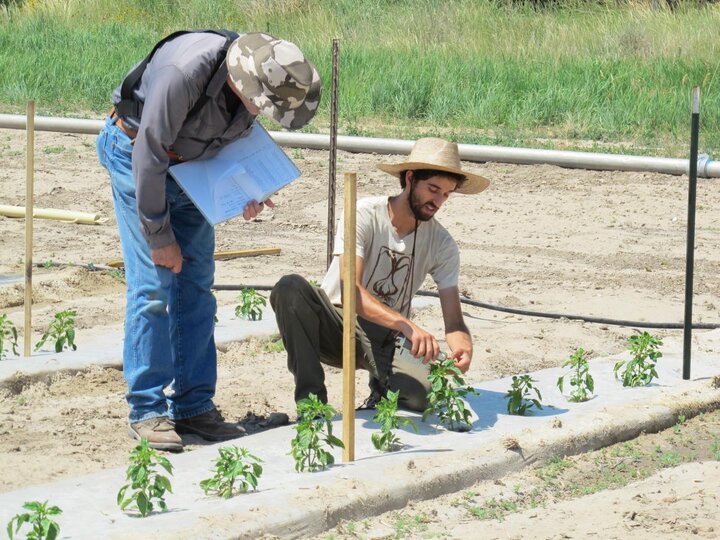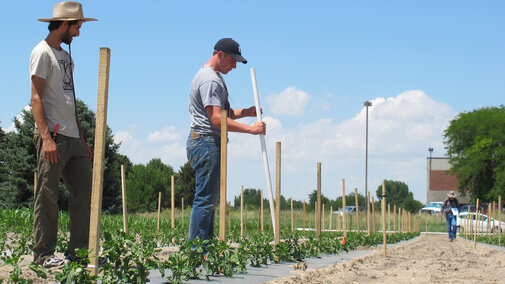The crop research plots at the Panhandle Research and Extension Center on the edge of Scottsbluff occupy several hundred acres altogether. Some of the plots are an acre or less in size, some are dozens of acres.
Among the sugarbeets, dry edible beans, corn, wheat, sunflowers and various alternative crops, is a small patch of pepper plants.
It’s not the peppers that researchers are interested in, but the thin sheets of mulch that cover the ground around each row of plants.
These thin plastic sheets are a new type of biodegradable mulch under development by 3M. Biodegradable mulch is commonly called biomulch because the plastic is made from polylactic acid (PLA), derived from corn, not petroleum.
This research project aims to track whether the PLA sheets are suitable for USDA-certified organic vegetable production – whether they will biodegrade into organic materials after the peppers are harvested, rather than remain in the soils or be taken to landfills.
The project is funded by the USDA NIFA (National Institute of Food and Agriculture) Organic Transitions Program. This is the first of three years for the project. Principal Investigator is Sam Wortman, assistant professor of environmental horticulture in the UNL IANR Department of Agronomy and Horticulture.

According to Wortman’s research website, “Biomulches are increasingly popular among vegetable farmers due to concerns about the negative environmental impact of plastic mulch use and disposal. We are partnering with 3M Company to evaluate bio-based fabric mulches that provide season-long weed suppression, conserve soil moisture, and can be left in the field and incorporated into soil at the end of the growing season.”
The goal of this project: “to identify post-incorporation management strategies that accelerate biomulch degradation in soil, and to determine the microbial drivers of biomulch degradation and the eventual fate of biomulch residues in the soil environment.”
There’s more information about the project at http://agronomy.unl.edu/wortman-research-biodegradable-mulches.
Tending to the Scottsbluff plots one afternoon recently was Ben Samuelson, a University of Nebraska graduate student working on a master’s degree in horticulture. Wortman is Samuelson’s advisor.
Samuelson said test plots have been established at Scottsbluff and one other site, on UNL’s East Campus in Lincoln. The Scottsbluff plot has six rows of pepper plants.
According to Samuelson, the mulch currently used in vegetable production is typically made of polyethylene, the same material as garbage bags.
After the peppers have been harvested in the Scottsbluff and Lincoln plots, soil samples will be collected to measure any changes in the PLA biomulch and soil.
He said the USDA standards have specific requirements for biomulch. For example, they must be 100% bio-based, with no fossil carbon. There are also parameters for the degradability of the material.
This study looks at how much of this material degrades to organic material, and how it behaves in the field.
Researchers will compare different methods of treating the biomulch after harvest such as compost, fallow irrigation, cover crop (interacting with roots), and compost extract (organisms from the compost suspended in water and applied to the soil).
Samuelson said ongoing research into organic production practices for potential USDA approval is needed because the demand for organic foods is growing faster than the supply.
He said the conventional mulch often results in acres and acres of black plastic mulch in landfills or tattered out in fields. It needs to be removed every year, which presently costs $150 to $400 per acre.

